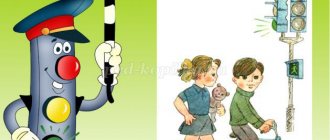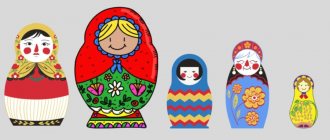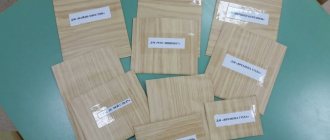Techniques used in finger games
In many ways, the choice of techniques depends on the stage at which the group teacher is working on finger play during the school year. Conventionally, it can be divided into three stages:
- Introductory (September-November). The teacher’s task at this stage is to arouse children’s interest in finger games and the desire to participate in them, to teach the simplest movements of fingers and palms. The main technique at this stage is direct demonstration, when the teacher takes the child’s hand in his own and directs the actions of his fingers.
- At the second stage (December-February), children are given more independence, they perform play actions, and the teacher pronounces the text of a nursery rhyme, poem or fairy tale. Not all children need direct demonstration anymore, so they introduce methods of explanation, reminders, and demonstration based on a model.
- The third stage (March-May) involves the manifestation of activity and independence of students: they not only perform the movements themselves, but also partially pronounce the text of the game. At the third stage, it is important to support the child’s desire for creativity and improvisation. For this, successful techniques would be asking questions to the child, changing and creatively unfolding the plot of a fairy tale or nursery rhyme used during the game: “The magpie-crow cooked a lot of porridge, fed everyone, because all our fingers are hard-working, well done!” (stroking fingers). The bun rolled and rolled along the path, and hid behind Olechka’s back. Where is Kolobok? You can’t see him, the little fox won’t eat him (the child hides the ball or toy behind his back).” Such creative techniques, in addition to increasing interest in the game, create the prerequisites for the formation of creative and innovative thinking, which will greatly help the child in the future.
The use of visual aids (preferably objects, toys, mitten dolls), artistic expression, and folklore is mandatory at all stages. An indispensable condition is the emotional, correct speech of the teacher. Without encouragement, praise, and support, classes with younger preschoolers are impossible. Even the youngest children should feel like they are in a “success situation.” This will give an incentive, a desire to engage in interesting activities again.
Photo gallery: aids and attributes for finger games with young children
The most suitable for early ages are cap dolls, which are put on like thimbles. Lacing is a type of game with objects in which parts are attached to the base using laces. “Walking” dolls with holes for fingers are used in individual work at an early age. Such relief paths, lined with buttons, develop both coordination and tactile sensitivity. In the sensory box, children, under the supervision of a teacher, can search for and hide a wide variety of objects. Games with Su-Jok massage balls are becoming increasingly popular. Screwing on the caps can also be put into a game plot: the flowers need to pick up the centers If The teacher has established contact with parents; mothers and grandmothers who know how to knit will willingly help in making finger dolls. Bi-ba-bo dolls attract children and allow them to join the wonderful world of theater. By examining scraps of fabric and fur, the child receives a lot of tactile impressions. Walnuts and chestnuts - very comfortable and original material for finger games
Tips for parents
If you decide to start doing finger exercises with your child, then you should consider a few simple rules. They will help make the exercises as beneficial as possible:
- Start learning individual sets of exercises gradually, from simpler to more complex. The main goal is to develop simpler skills, learn individual elements, and then you can move on to more complex exercises.
- Every lesson should be fun and interesting. The baby should think that this is a special game, then he will be happy to repeat it again and again.
- Do gymnastics regularly, but not for too long. Children of this age get tired quite quickly and lose interest in activities.
- It is advisable to repeat each exercise several times, four or five in one session.
- Pay attention to every finger, from big to little finger.
- Try to recite the verses that accompany the exercises by heart rather than reading them from a book.
- Do each exercise yourself, show your child an example.
Sources
- https://vospitanie.guru/doshkolniki/zanyatiya-palchikovoj-gimnastikoj-v-detskom-sadu-dlya-detej-3-4-let
- https://sibmama.ru/palchikovie_igri.htm
- https://malchishki-i-devchonki.ru/kartoteka-mladshaya-gruppa-na-temu-palchikovaya-gimnastika-dlya-detej-2-3-let.html
- https://melkie.net/zanyatiya-s-detmi/palchikovaya-gimnastika-v-mladshey-gruppe.html
[collapse]
Finger gymnastics file
We offer a selection of exciting games in poetic form for a 3-year-old child. Finger gymnastics is carried out in kindergarten by a teacher, and at home by parents.
Garden
“The garden is turning green” - clench and unclench your fingers;
“Here is parsley, here are peas” - bend your fingers one by one;
“Here are the radishes, here are the potatoes” - continue bending your fingers;
“The radish has grown a little” - bend the remaining little finger;
“My green garden has produced a harvest for the whole year!” – clap your hands.
Fish
“A fish swims on water” - place the brush horizontally, move it in a wave-like manner;
“The fish lives happily” - wave your hands up and down with your palms facing the floor;
“The fish in the river is mischievous” - make a “threatening” movement with your index finger;
“We’ll catch you now!” – sharply bring your palms together, as if you’ve caught someone.
Worms
“Two worms” - make “crawling” movements with your index fingers;
“Looked out of the bull’s-eye” - fold your palms, then open them away from you, like the doors of a door;
“Long time no see” - spread your palms facing each other to the sides;
“Hugged tightly” - shake one hand with the other;
“We didn’t want to part” - unclench your hands;
“But I had to say goodbye” - wave with both hands pointing at each other.
Pies
“I have five pies” - wave both hands with fingers spread;
“The first one is for daddy” - bend the thumb of your left hand;
“Second for mommy” – index;
“Third for Grandpa” – average;
“Fourth for Granny” – unnamed;
“And the fifth one is for me” - bend your little finger.
Perform similar actions with your right hand.
Let's cook cabbage
“To get tasty cabbage, we must chop it” - quickly move up and down with the edge of your hand;
“Rub” – move your hands clenched into fists back and forth;
“Salt” – imitate with your fingers as if you were sprinkling salt;
“Squeeze” – strongly clench and unclench your fists several times.
Animals
“This is a cowardly little bunny” - bend your little finger;
“This is an angry wolf cub” - nameless;
“This is a beautiful little fox” - medium;
“This is a prickly hedgehog” - index;
“This is a clumsy bear” - big;
“And this is a fir cone for the bear” - put the resulting fist forward.
Who's that flying?
“Who is that flying near your ear? So it’s a fly!” – make circular movements with your index finger near the auricle, pronouncing the sound “w-w-w-w”;
“Who is that flying near your nose? So it’s a wasp!” – make circular movements with your finger near the tip of your nose, pronouncing the sound “z-z-z-z”;
“Who sat on his forehead? So it’s a mosquito!” – touch your forehead with your index finger with the sound “pi-i-i”;
“What to do with a mosquito? We need it like this!” – lightly hit yourself on the forehead with your palm;
“No, it’s better to let the mosquito go!” – bring your open palm to your mouth and blow on it.
Feeder
“There is a feeder hanging in the yard, a treat for all the birds” - make “inviting” movements with your hands;
“For tits - a piece of lard” - make a movement with the edge of your hand, as if cutting something;
“Grains are for sparrows” - put your fingers together, imitate as if you are sprinkling grain;
“Crumbs for the pigeons” - rub your palms together as if you were crumbling bread;
“Macaroni for the crows” – extend your open palms forward.
Bees
“A hive is hanging on a branch - a house for bees” - extend your fist forward.
“The bees are flying out, let’s count them” - straighten your fingers one by one;
“One, two, three, four, here come five! Now they’re going to bite us!” - tickle the child.
Summer
“The sky has cleared of the clouds” - make sweeping movements with your hands, as if dispersing the clouds;
“The sun has appeared in a clear sky” - fold your palms with edges on the side of the thumb, spread the rest of your fingers, raise your arms above your head;
“The children are happy” - clap your hands;
“Summer time has come” - spread your hands.
Charger
“We have athletic fingers, they can do a lot” - spread your fingers, move them;
“Walking, running” - make “walking” and “running” movements with your fingers;
“They are training, doing push-ups” - clench and unclench your fists;
“They are trying well” - clap your hands.
Sun
“The morning has come, the sun has risen” - stretch your arms as high as possible;
“The night will come, the sun will go to sleep” - lower your hands;
“Happy sunshine lives” - twist your relaxed hands left and right;
“And he sends us rays of happiness” - clap your hands.
Forms of organization of finger games
Finger games with children of the third year of life can be carried out in the form of frontal, subgroup and individual lessons.
Table: features of organizing finger games depending on the form of activity
| Form of organization | Number of children, duration | Key Features |
| Frontal | All children of the group. 7–10 minutes. |
|
| Subgroup | 4–8 people. Up to 7 minutes. |
|
| Individual | 1–3 people. Up to 5 minutes. |
|
| Notes |
|
Structure and time frame of frontal classes in the first junior group:
- Introductory part. Organizing children, creating a positive mood, a surprise or game moment, the appearance of a fairy-tale character. Up to 2 min.
- Main part. Introductory conversation, demonstration of illustrative or other visual material, finger play itself, didactic game. 5–7 min.
- Final part. Summing up, encouraging words from the teacher. Up to 1 min.
Table: card index of works of art for finger gymnastics, developed by R. R. Gainullina
| “Cabbage” We chop and chop the cabbage, We salt and salt the cabbage, We three and three cabbage, We press and press the cabbage. (Move your palms up and down, alternately stroking your fingertips, rub your fist against your fist. Clench and unclench your fists.) | “Turnip” The grandmother and grandfather are pulling and pulling (Pulling fingers by the phalanges of the nails) A large turnip from the ground: If only our granddaughter would come, The dog Bug would help. Where is the cat, mouse, baby? (The fingers of the same name touch each other.) At least she held on tight, The turnip was stretched out. |
| “Adults and children are happy” Who else is enjoying the sun? Grandfather is happy, Grandma is happy, Mommy is happy, Daddy is happy, I am very happy. The whole family is happy about the sun! (Perform the movements according to the teacher’s model: for each line, children bend their finger, line 6 - clench and unclench their fist). | “My family” This finger is my grandfather. This finger is grandma. This finger is daddy. This finger is mommy. This finger is me, that’s my whole family. (As you read, a finger bends on the child’s hand, starting with the thumb). |
| “Hedgehog” The hedgehog stomped along the path and carried mushrooms in a basket. To count the mushrooms, you need to count your fingers. (Children take turns bending the fingers on their left hand, then on their right hand. At the end of the exercise, their hands should be clenched into fists.) | “Helper” Our Antoshka washes the dishes, washes the fork, cup, spoon, (Rub your palms together, “wash the dishes”). I washed the saucer and glass and closed the tap tighter. (Extend your fingers from your fist, starting with the little finger. Perform imitating movements). |
| “Friendship” We bend our fingers together, clench our fists tightly. One, two, three, four, five - (We begin to unbend. Children clench their fingers into fists, and then relax them and unclench them). | “Feet walk along the road” Big feet: Walk along the road. Top-top-top... Little legs Run along the path: Top-top-top. (Four fingers of the right hand tap on the left hand, children repeat the text after adults). |
| “Steamboat” There was a steamboat at sea. (Palms together in a bowl shape). So he sailed to the pier. (Make wave-like movements in the air). He blew his trumpet: “U-u-u!” (Move your thumbs at the same time). | “Horses” Along the white, smooth road, their fingers gallop like horses: Chok-chok-chok. Chok-chok-chok. A frisky herd gallops (Fingers jump on the table, repeating the text after the adults: “chok-chok, chok-chok”). |
Table: summary of GCD in the 1st junior group on speech development using finger games “Nuts for a squirrel”, developed by N. V. Shandina
| GCD stage | Contents of the stage |
| Tasks |
|
| Material | Toys: bunny, bear; squirrel, walnuts; tree layouts. |
| Introductory part | Educator: Children, look what I found. (shows the box). Let's see what's in the box? These are nuts. Listen to the poem here.
Educator: Let us go into the forest and find the one who lost these nuts. |
| Main part | Children "go to the forest." A hare is sitting under a tree. Educator: Look, who is it? What does the bunny have? Children: Ears, paws, tail, eyes. Educator: Bunny, tell us, are you the one who lost the nuts? Hare: No. It's not me. I love carrots. Educator: Guys, let's treat the bunny with a carrot. The outdoor game “The little white bunny is sitting” is played. Children say goodbye to the hare. Educator: Look who is sleeping under the tree in the snowdrift? Children: Bear. Educator: Let's wake up the bear:
Children look at the bear and imitate its movements. Educator: Guys, let's have some fun for the bear. Here I have magic bushings. Didactic game with bushings. Educator: Bear, are you the one who lost the nuts? Bear: No, not me. Maybe a squirrel sitting on a tree. She loves to chew nuts. Educator: Squirrel, weren’t you the one who lost the nuts? Squirrel: Yes, I lost my nuts. Thank you children. Educator: Squirrel, listen to what nursery rhyme we know about you.
Squirrel: Guys, I have a lot of nuts and I want to treat you to them. The children help themselves and thank the squirrel. |
| Final part | Educator: Thank you, but it’s time for us to return to kindergarten. Where have we been, guys? Who did you meet? Today you were very attentive, well done, you had fun playing with the animals. |




